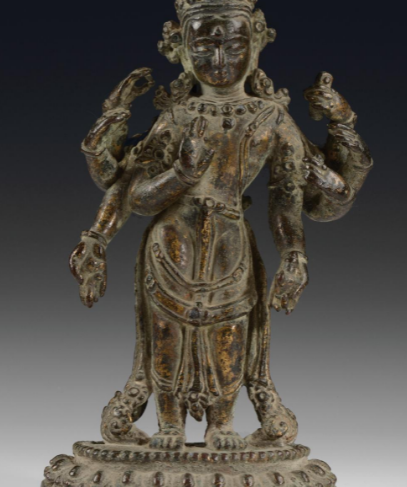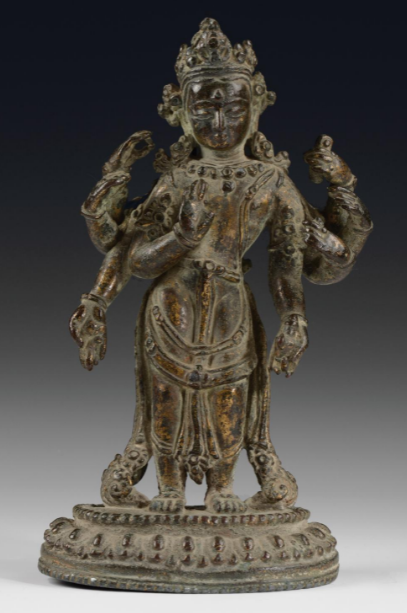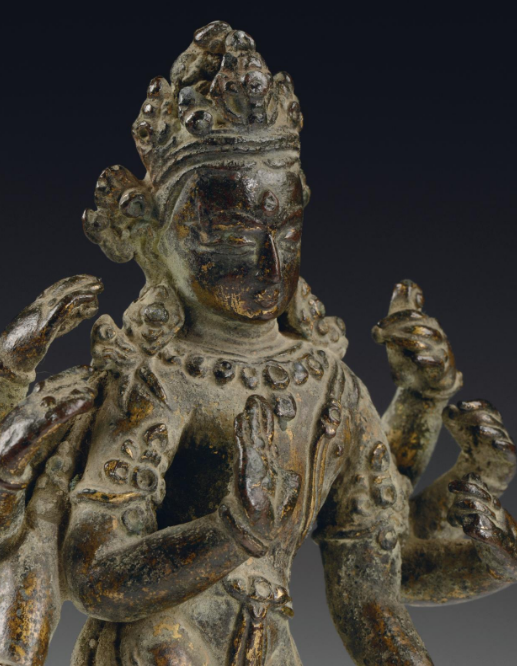Details
- Title : AMOGHAPASHA
- Year : 15th or 16th Century
- Classification : Sculpture
- Medium : Gilt-bronze inlaid with semi-precious stones
- Dimension : Height 6 5/8 in. (16.8 cm.)
- Accession No : GNM_LOT 96_PUN_07
- Country/ Geo-location : Nepal
- Collection : PUNDOLE’S
- Status : LIVE AUCTION The Art of the Himalayas from the Collection of Roshan Sabavala (M0009) (As per NOV 2021)
- CURRENT STATUS : Passed
- ESTIMATED : ₹200,000 - ₹300,000
- NOTE : Amoghapasha stands in elegant tribhanga on a lotus pedestal with beaded rim, his eight arms radiating around him.He is dressed in a dhoti secured with a jewelled girdle, with pendant belts that hang to his knees. He is adorned with beaded jewellery, inset with semi-precious stones, the benign face with raised urna, his thick locks pile up into a high chignon secured with a foliate crown. Amoghapasha represents a tantric form of Avalokiteshvara and is regarded as the tutelary deity of the Kathmandu Valley.The cult of this bodhisattva has been especially popular with Nepalese Buddhists since the Licchavi period (c. 300 - 879), and is rarely encountered outside the Kathmandu Valley. The bodhisattva is consistently portrayed as a multi-armed deity standing in tribhanga, compare with a Licchavi example with twelve arms, see David Weldon and Jane Casey Singer, The Sculptural Heritage of Tibet: Buddhist Art in the Nyingjei Lam Collection, London, 1999, p. 51, pl. 9. Eight-armed examples became the normal iconography in Nepal since at least the early Malla period (c. 1200 - 1479), as seen in a 14th century example now in the Rijksmuseum, Amsterdam, see Ulrich von Schroeder, Indo-Tibetan Bronzes, Hong Kong, 1981, p. 359, pl. 95E. Compare the modeling, the jewellery type and the design of the lotus pedestal with a six-armed gilt bronze Vasudhara in the Sonia Brauner Collection dated 1462, see Jan Van Alphen, Cast for Eternity, Antwerp, 2004, p. 131, cat. no. 39.


